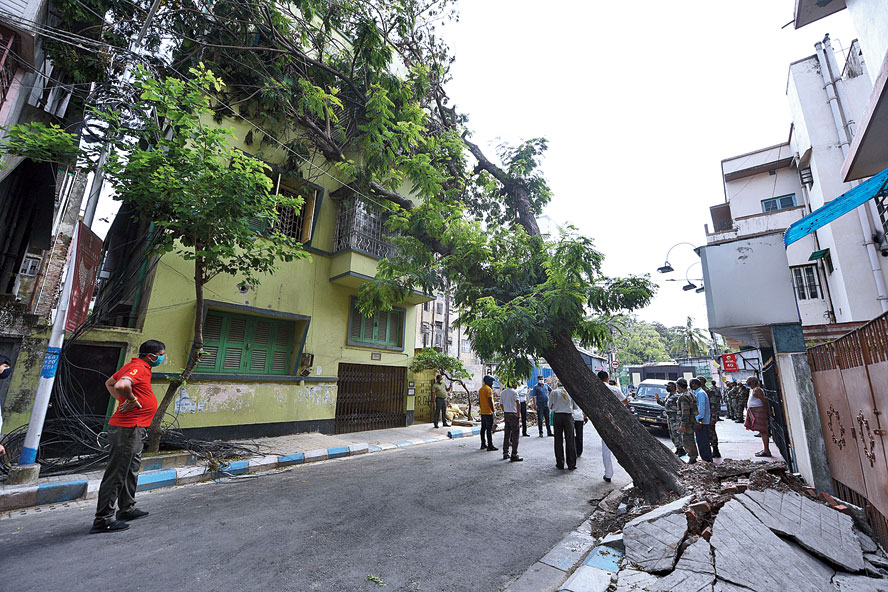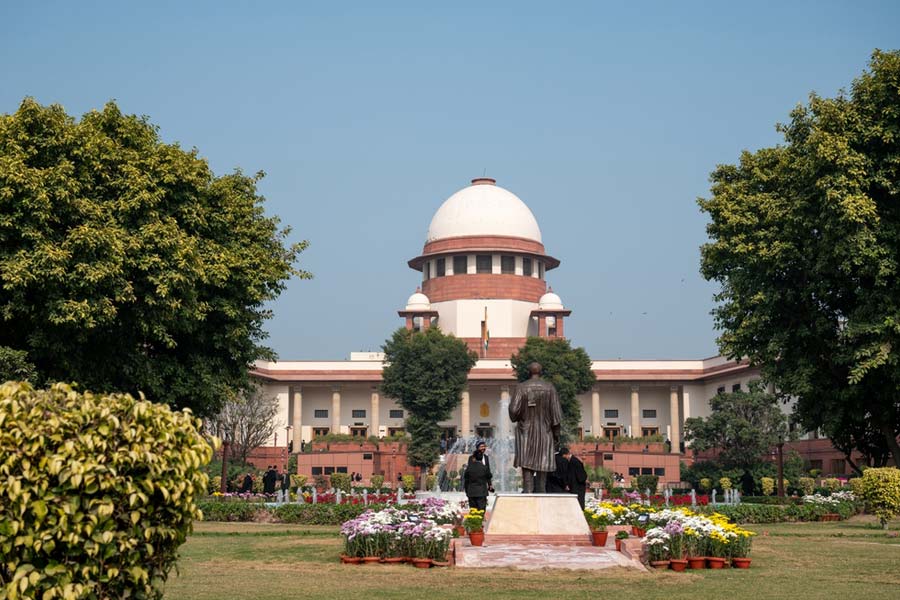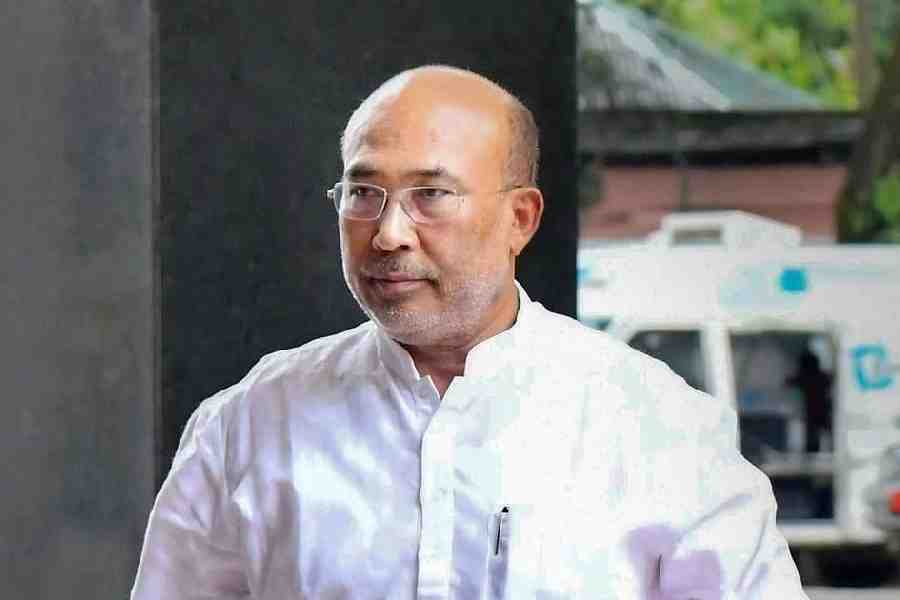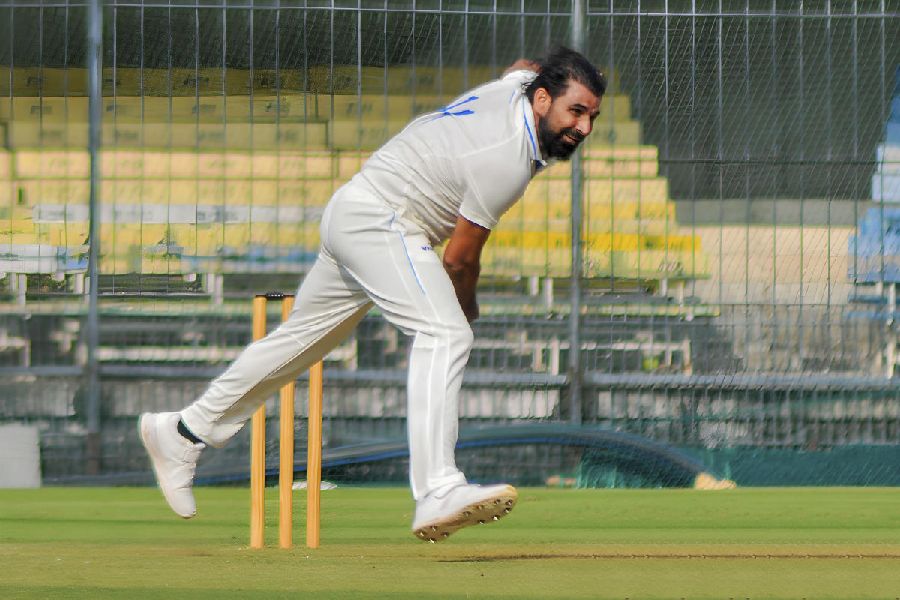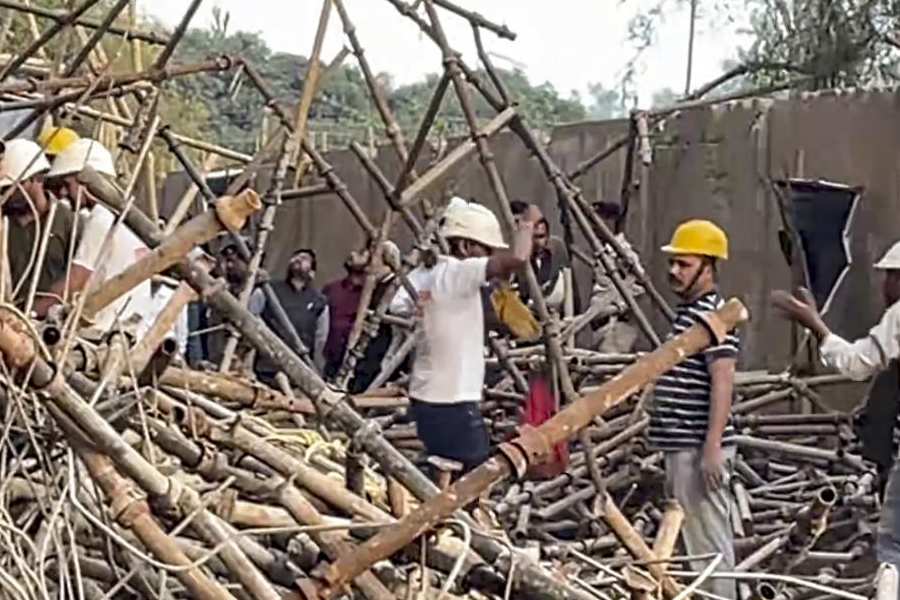The city should have a policy on how to plant saplings, choose species depending on the location and look after trees, naturalists and urban designers said in the aftermath of Cyclone Amphan that felled over 5,000 trees in Calcutta.
The specialists said trees were the natural barriers that act as the first line of defence against fierce winds, which would otherwise destroy more homes and other infrastructure falling in their way.
Haphazard plantation has been the practice so far, along with unplanned or unscientific pruning of trees and leaving the trees to fend for themselves.
But specialists are demanding a change and calling for a plantation policy that would address concerns regarding planting saplings and taking care of trees.
They are unanimous that tree plantation or pruning should be carried out under the supervision of a panel of specialists who are experienced in urban plantation, to be formed by the civic body.
The Calcutta Municipal Corporation, the specialists said, should immediately talk to people with expertise in the field and prepare a plantation policy since the monsoon, the plantation season, is days away from hitting the city.
Any delay will mean a full year will be lost for initiating the process to compensate for the loss of green suffered because of the Amphan.
“For years and decades, trees on our footpaths have been left to fend for themselves. They were never cared for, they grew on their own and the authorities only chopped branches when they intruded into homes, blocked traffic lights or when some festival is coming up,” said Arjan Basu Roy, a naturalist and founder of Nature Mates, an NGO that works on nature and environment.
He called for a sea change in the approach. The CMC, he thinks, should immediately form a panel tasked with preparing a plantation policy. The panel should comprise naturalists, horticulturalists, scientists, forestry specialists, urban designers and other experts in urban plantation.
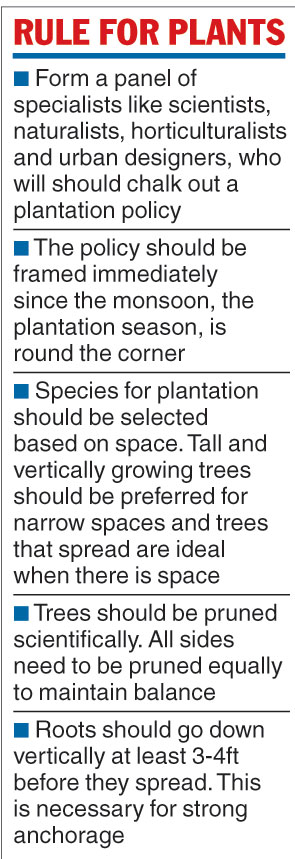
The Telegraph
The panel should be given full authority to decide which trees to be planted and where and how trees need to be trimmed. If needed, a member of the panel can visit a site where trees need to be pruned.
“The places that have become vacant after trees fell should be inspected. If it is a narrow space with other trees or streetlights, trees that grow vertically without spreading much should be planted. But if there is space, a tree that spreads and forms a canopy should be preferred,” Basu Roy said.
Examples of tall trees that can grow in narrow places are debdaru, jarul, palash and bakul. The ones that can spread and form a canopy include sodal, rosia and tabebuia.
Another naturalist said spaces left vacant by fallen trees should be identified quickly and new trees planted. This is necessary to prevent open spaces being encroached on. The concrete top layer should be removed and the soil cleared of impurities like metals or chunks of concrete, which are common beside roots of trees standing on Calcutta’s footpaths.
An inspection of several uprooted trees in the city showed that their roots had gone down hardly 2ft or 3ft underground. This, many tree experts felt, was a reason why Calcutta’s trees topple so frequently and after every storm.
At least eight trees were uprooted on Wednesday, when a storm clocking nearly 100kmph hit Calcutta.
Urban designer Debatosh Sahu said that during plantation, a 3-4ft deep trench must be dug and a metal jacket inserted in it. “The roots of the tree should be allowed to go down vertically for at least 3-4ft and then allowed to spread. Most trees on our pavements have their roots spreading right from where the roots begin,” said Sahu.
If the roots go down vertically for some length and then spread, the anchorage would be much stronger and the trees able to withstand strong winds, he said.

